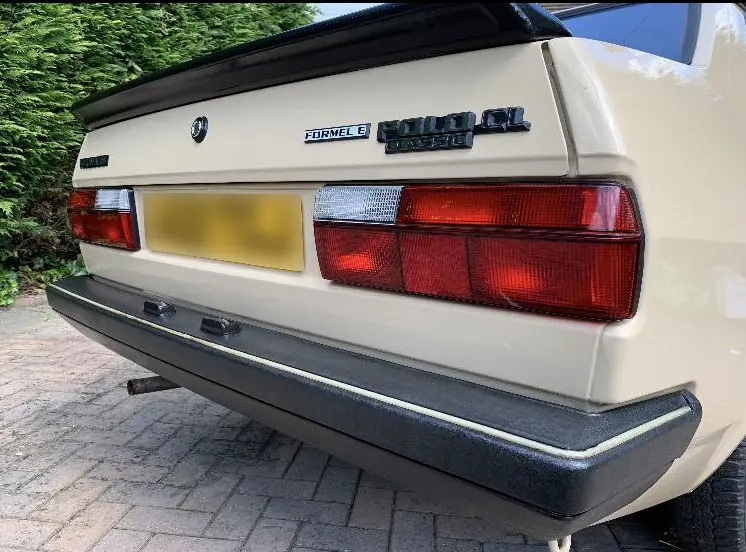MEET THE OWNER – ANDREW CLARE AND HIS 1983 VOLKSWAGEN POLO CLASSIC
10 September 2024
“It is my best friend’s car. He was working at the local Volkswagen garage in 2013 and received a call to say there was an old Polo for sale and that he was interested. He didn’t even see the car – he just paid the recovery bloke the money, and this is what turned up. That Polo Classic ‘Derby’ is the best thing he has ever brought.”

The VW that Katie Bradbury’s friend, Andrew Clare, acquired was a very unusual vehicle indeed – a second-generation Derby. Volkswagen launched the “Polo Mk.2 “Breadvan”” and its Derby saloon counterpart at the 1981 Frankfurt Motor Show. Autocar thought the latter was “more shapely” than its predecessor, and its lines were certainly more conventional than those of the new Polo.
UK-market versions used the name ‘Polo Classic’, which by 1984 Volkswagen adopted across Europe. Their reason for building a two-door saloon derivative of the Polo was entirely logical, for in the early 1980s, there were still motorists who regarded a hatchback as akin to a van. On the other hand, a Polo Classic/Derby was “traditionally styled”, and as it was over a foot longer than the Breadvan, this meant a sizeable boot that could accommodate over 19 cubic feet of luggage. Plus, Autocar found it “delightful” when cornering hard.
In 1983, the Classic also had a limited array of front-wheel-drive competitors. The 1.1-litre Formel E cost £4,373, compared with £4,125 for a Nova 1.2L two-door, which was probably the VW’s nearest rival. The latter’s popularity surprised Vauxhall, as it enjoyed quite a following with the more mature motorist who regarded Crossroads as dangerously radical.

The Volkswagen, by contrast, had a more youthful appeal: a car for the young insurance sales agent who liked playing Duran Duran’s Seven and the Ragged Tiger album as they headed up the A34. Not that the Formel E was aimed at the would-be Nelson Piquet as the specification included a “3 + E economy gearbox, gear change indicator and fuel consumption indicator”.
VW dispensed with the Classic suffix in 1987, three years before giving the range a significant facelift. Nineteen ninety-four marked the demise of the Mk.2, and Classic is now as rare as a watchable edition of Holby City. In 1983, the Polo was the UK’s 11th best-selling car. Today, Andrew finds the public is usually uncertain – many are unsure what car it is, while some confuse it with the VW Jetta. There is also shock at the low mileage of 25,251 miles and the Classic’s almost original condition – the only non-factory items are the BBS wheels.

Andrew is always concerned for his Derby’s welfare and finds taking the wheel akin to driving a museum piece. It is always an adrenaline rush to take to the road, albeit not because of the limited speed from the 1.1-litre engine but simply because of the Volkswagen’s rarity. However, she manages to keep to modern-day road speeds and always does well up the big hill to the local Stonor Park VW show—the only event she attends. And, as the brochure promised, “It’s a genuine Volkswagen all the way.”
With thanks to Katie Bradbury and Andrew Clare for their time and permission to use the images in this blog.
